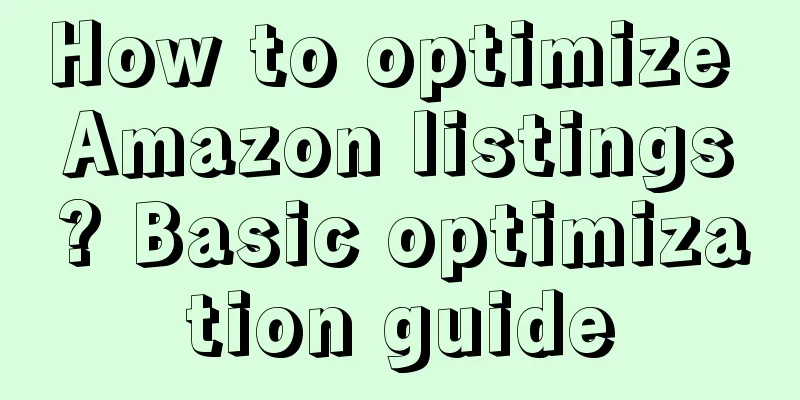User Practical Methodology: How to Build a User Insight System

To build a user insight system, we will build four analysis systems to label users, namely motivation insights, value preference insights, behavioral characteristics insights, and life cycle insights. We often ask ourselves four questions from the user's perspective: The first one is: Why do users choose to shop on your platform? Here we need to understand the user's shopping motivation. Generally, users are labeled in two ways: discount-driven and product-service-driven. Second: What are the characteristics of users who shop continuously on your platform? Here we need to understand the user's value and preference. Continuous repurchase is not necessarily a good user. Why? Maybe I will only shop if you send large coupons every day. If you don't send them, I will not shop. User value characteristic labels generally include wool type, risk type, high net worth, etc.; preference labels include channel preference, category preference, timing preference, and price preference. Third: What are the behavioral characteristics of user repurchase? Here we look at the characteristics of user behavior, whether users go straight to the point and buy and leave or are willing to compare prices. Our labels are search-oriented, price comparison-oriented, and shopping-oriented. Fourth: What stage is the user life cycle in? Here we can focus on analyzing whether the overall sales of the platform are driven by new customers, old customers, or growing users. The labels are new customers, growing customers, and mature customers. What specific business scenario problems will be solved? Let us give a few examples: 1. The user repurchase rate is low. Is it because of the users or the products? How to identify the reasons? 2. How to improve user retention 3. How to increase user frequency To solve the problem of low user repurchase rate, I have seen many operations colleagues simply and crudely issue coupons, thinking that users will not repurchase without discounts. In fact, we can easily solve this problem using insight models. The first analysis model is a cross-analysis model of repurchase characteristics, life cycle characteristics, and value characteristics. We depict it with a bubble chart. The horizontal axis is the user life cycle, and the vertical axis is the sensitivity to discounts. The size of the bubble is expressed by the number of users, and the color of the bubble is expressed by the value stratification. Let's observe that if the bubble of a one-time wool user is particularly large, this explains why the quality of your new customer acquisition is not high. We then divide the bubble chart into four quadrants. The bubbles in the upper left quadrant are more concentrated, which means that a large number of highly sensitive new customers or growth-stage users have failed to migrate, and we need to work on the user's growth path system. The second analysis model is the preference characteristics, behavior characteristics, and timing cross-analysis model. We use a bar stacked chart to represent this model. The horizontal axis is the repurchase interval period, and each block of the stacked chart is the user's repurchase behavior characteristics. What are the repurchase behavior characteristics? There are clear demand types, price comparison types, shopping types, and social types. Different columns represent categories. This model allows us to intuitively see what type of users repurchase in each category, what is the proportion, and where the repurchase cycle is concentrated. Then we can focus on the repurchase situation of users who are close to the repurchase cycle, and trace whether there are any actions to remind repurchases of the category. To solve the problem of improving retention, the most common solutions we have seen are issuing points, issuing coupons, pushing, etc., but none of them actually conducts in-depth analysis of the motivations behind user retention. My solution is to conduct an in-depth analysis of user behavior and do AB testing to compare retention of different behaviors. We can first review how users completed their first order in the customer acquisition scenario, such as by scanning a QR code at a local promotion event, being invited to join a group purchase, or receiving a new user gift package on their own. The next step is to focus on new users in each scenario. What action is triggered when the initial behavior occurs to stimulate the user's next retention behavior? For example, let’s take the field promotion scenario as an example and impose four influencing behaviors to conduct a control experiment.
These four actions served as the experimental group, and the control group was users who did not take any action. It was found that the retention rate of users who took these actions in the next month was 5-10 points higher than that of users who were not affected by any action. Then the same method was used. After users with different characteristics returned to the platform and their revisit behavior was monitored, what kind of pop-up action or guiding reminder could make the user stay longer and deepen their browsing depth? This was the focus of the research. The business issue of increasing frequency and increasing retention are basically in a causal relationship. Retention means return visits, and the only difference between retention and frequency is conversion. This is actually a transformation of the problem. How to continue to improve the conversion rate after improving the retention rate? We did not go into depth about user motivation insights in the retention link. In fact, the correlation between increasing frequency and user motivation is relatively large. The reason why a user frequently buys is very simple, either the price is cheap or the experience is good. We classify them into two labels, discount-driven and product and service-driven. It is very easy to increase the frequency of discount-driven users. We have made a frequency-increasing product pool and push coupons or prices to this group of users at any time. Product and service-driven users do not need to push coupons, but just push high-net-worth membership rights and interests services, and find ways to increase the service experience. The above is an idea and method for building a user insight system. To solve the pain points of scenarios, it is also necessary to conduct in-depth research on users from dimensions such as motivation, value, and characteristics in order to find better solutions. Author: Zhao Wenbiao, public account: User Operation Observation (ID: yunyingguancha), a senior practitioner in the field of user operation and private domain traffic marketing, focuses on sharing practical articles and unique insights on scenario-based user operation and community marketing. |
<<: Bilibili’s vertical screen “Rashomon”: Is it more about “money prospects” or ecology?
>>: Looking at vertical user operations from three dimensions
Recommend
How to operate Pinduoduo well?
With the development of e-commerce platforms, ther...
With annual revenue exceeding 20 billion and tens of millions of fans across the entire network, how does the national snack brand "Want Want" develop its private domain?
This article mainly analyzes the traffic matrix, p...
How can I access YouTube? How can I use YouTube in the country?
YouTube is a very popular video platform abroad. I...
Which platform is suitable for beginners to engage in cross-border e-commerce?
Now many people want to do cross-border e-commerce...
Can Amazon reserved inventory be sold? What does reserved inventory mean?
For sellers who sell goods on the Amazon platform,...
Is Lazada's average order value high? How does it make money?
I believe that all of you who run online stores sh...
HEYTEA x FENDI, another one-way collaboration?
The "HEYTEA" x "FENDI" collabo...
WeChat public account articles can finally modify the cover image
WeChat public account operators will have a major ...
How do I register a corporate account? How long does it take to register a corporate account?
As a world-renowned e-commerce platform, Wish prov...
Not only reference, the hidden main line of Bawangchaji's rapid growth
How to quickly stand out in a market crowded with ...
The impact of copywriting: How a tiger smells a rose
How to write a good copy and make it impactful? Yo...
Why are there more and more advertisements in your circle of friends?
In the digital age, WeChat has become an indispens...
Brand No. 1: How to use verbs to call to action
This article shares five key points that need to b...
Information filter丨The three steps of marketing strategy: brand strategy, product strategy, and communication strategy
In today's highly competitive market, brand bu...
How to choose Amazon operation tools? Operation tool recommendations
Success on Amazon requires long-term efforts. Even...









